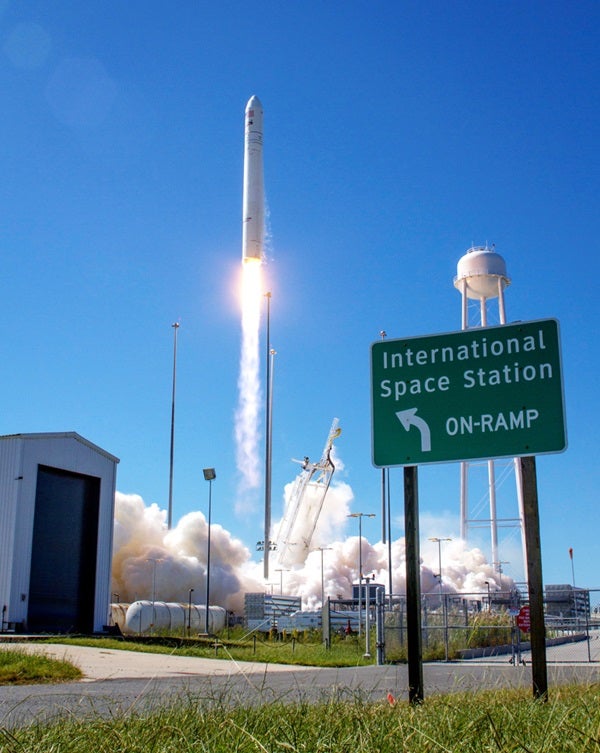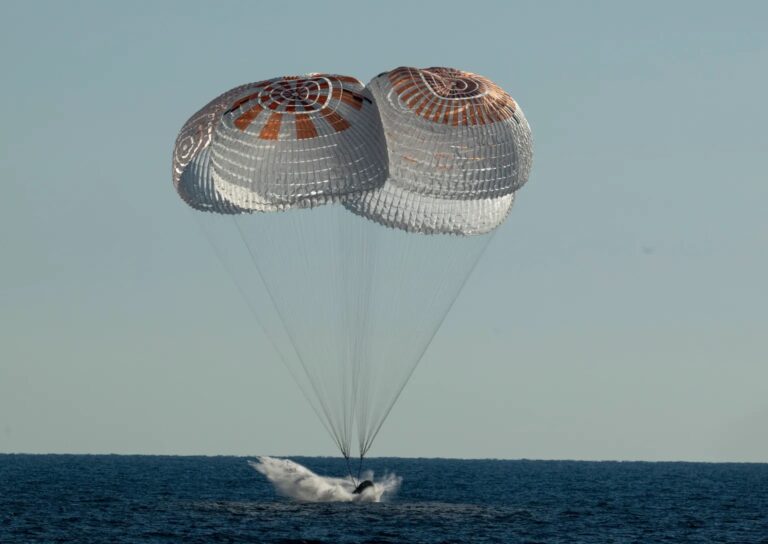Orbital has confirmed that over the past 24 hours, the Orbital team developed and tested a software fix for the data format mismatch that necessitated a postponement of the first rendezvous operation that was scheduled for the early morning of Sunday, September 22. However, that process, together with the impending Soyuz crew operations, resulted in a tight schedule to the point that both Orbital and NASA felt it was the right decision to postpone the Cygnus approach and rendezvous until after Soyuz operations.
An exact schedule for Cygnus will be determined following the successful completion of Soyuz operations.
UPDATE: NASA and its International Space Station partners have approved a Sunday, September 29, target arrival of Orbital Sciences’ Cygnus spacecraft on its demonstration cargo resupply mission to the space station.
Cygnus launched Wednesday aboard an Antares rocket at 10:58 a.m. EDT September 18 from NASA’s Wallops Flight Facility in Virginia after a 24-hour delay due to poor weather preventing its roll-out to the launch pad.
It has several demonstration objectives it must complete before NASA approves its capture by the Canadarm2 and its berthing to the Harmony node. The Cygnus has already achieved three of its demonstration objectives during its first two days in orbit. The vehicle first demonstrated its position and control ability, or its ability to orient itself in space; second, the vehicle turned off its engines and operated while in free drift; third, Cygnus conducted a demonstration abort maneuver.
Before any new cargo craft can approach and rendezvous with the station for the first time, it must meet a set of objectives to prove its capabilities before it is finally captured or docked. The resupply craft is followed closely by mission controllers on its way to the station. When the spacecraft reaches certain points along its trajectory, the flight director polls mission controllers before giving the “go/no-go” decision to proceed to its next point.
As Cygnus meets its demonstration objectives and moves closer to the space station, Expedition 37 Flight Engineers Luca Parmitano and Karen Nyberg will be watching and working in tandem with Mission Control. Parmitano will be in the cupola at the Canadarm2 controls monitoring its approach. Nyberg will be his backup at the secondary robotics workstation inside the Destiny laboratory.
When Cygnus meets its final demonstration objective of pointing a tracking laser at a reflector on the Kibo laboratory, it will move to its capture point about 33 feet (10 meters) from the station. Cygnus will turn off its thrusters, operating in free drift, and Parmitano will maneuver the Canadarm2 to grapple and capture the new resupply craft.
After capture, Parmitano will operate the Canadarm2 to move Cygnus and attach it to the Harmony node. The hatches to Cygnus are planned to be opened following leak checks and power connections.
Orbital Sciences is the second company to send a commercial cargo craft to the space station. SpaceX was the first company to send its own cargo ship with two successful commercial resupply missions and two demonstration missions under its belt.










